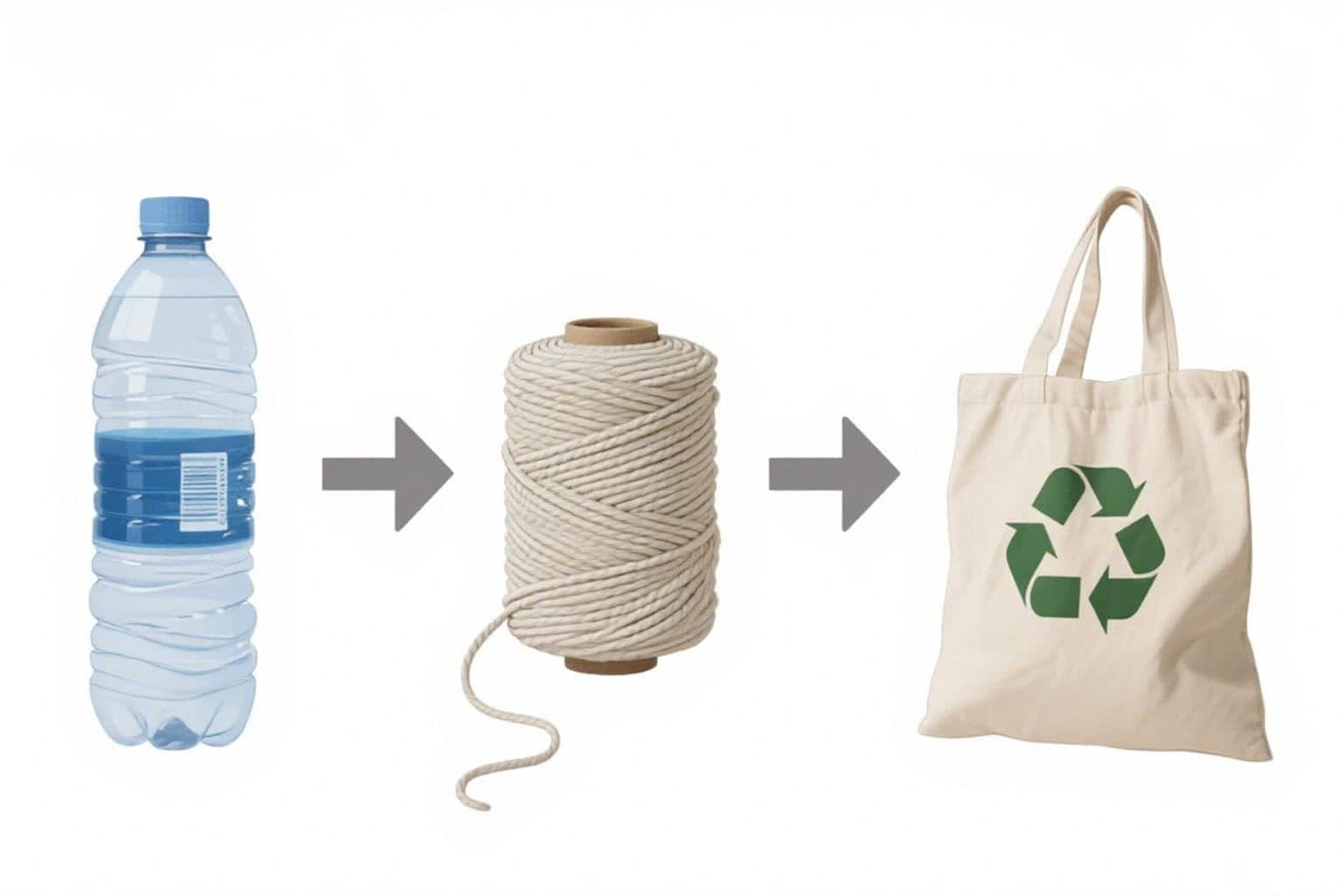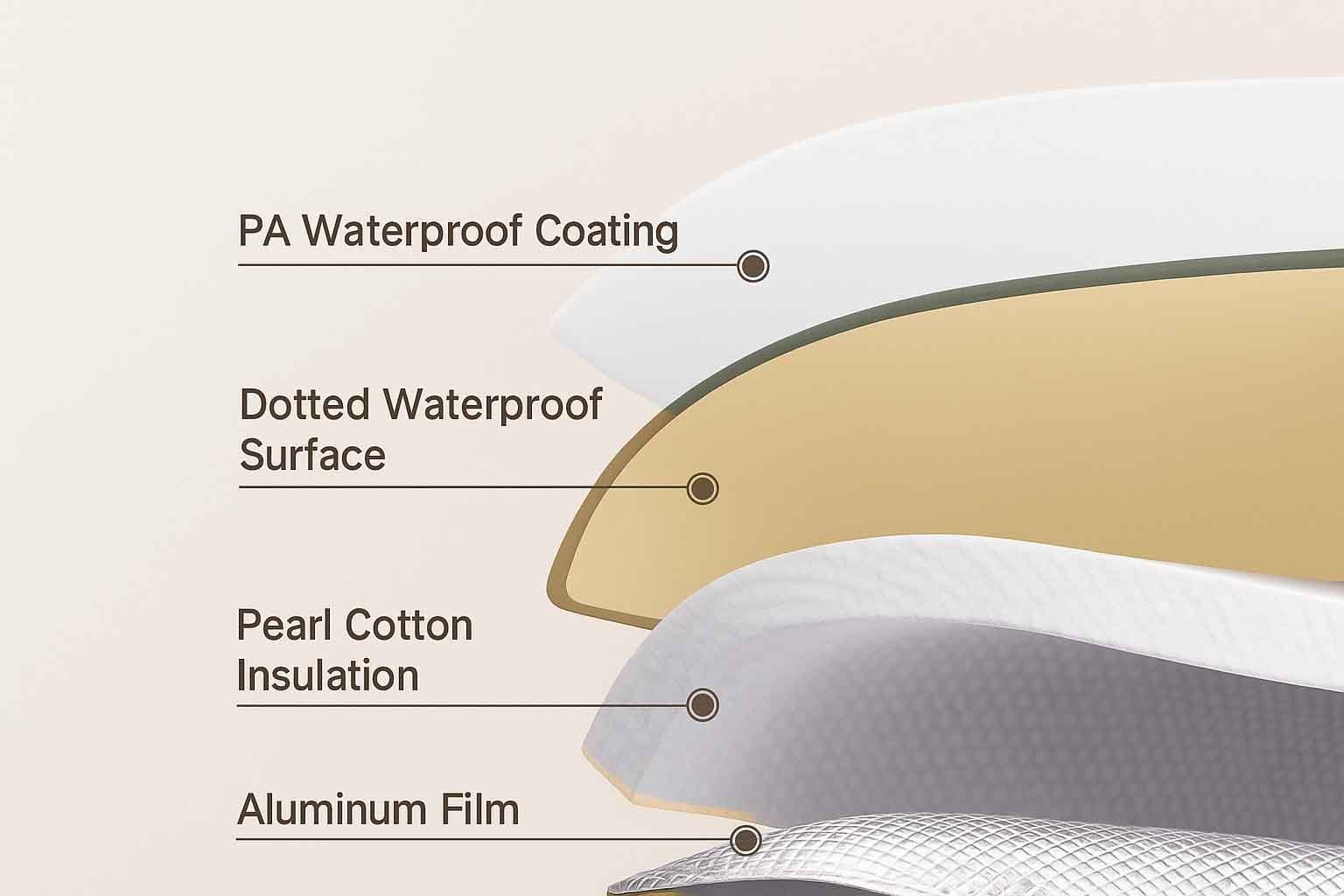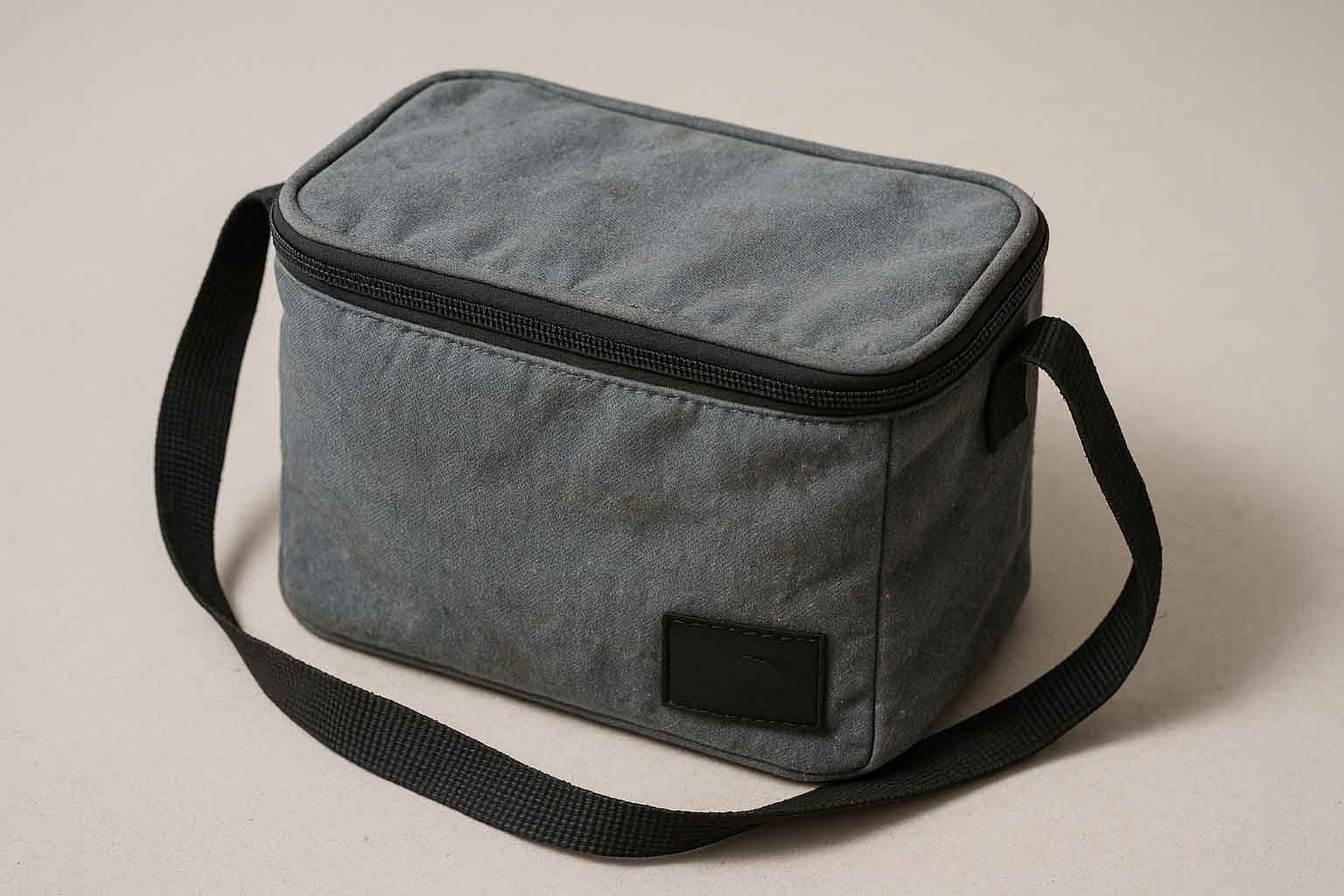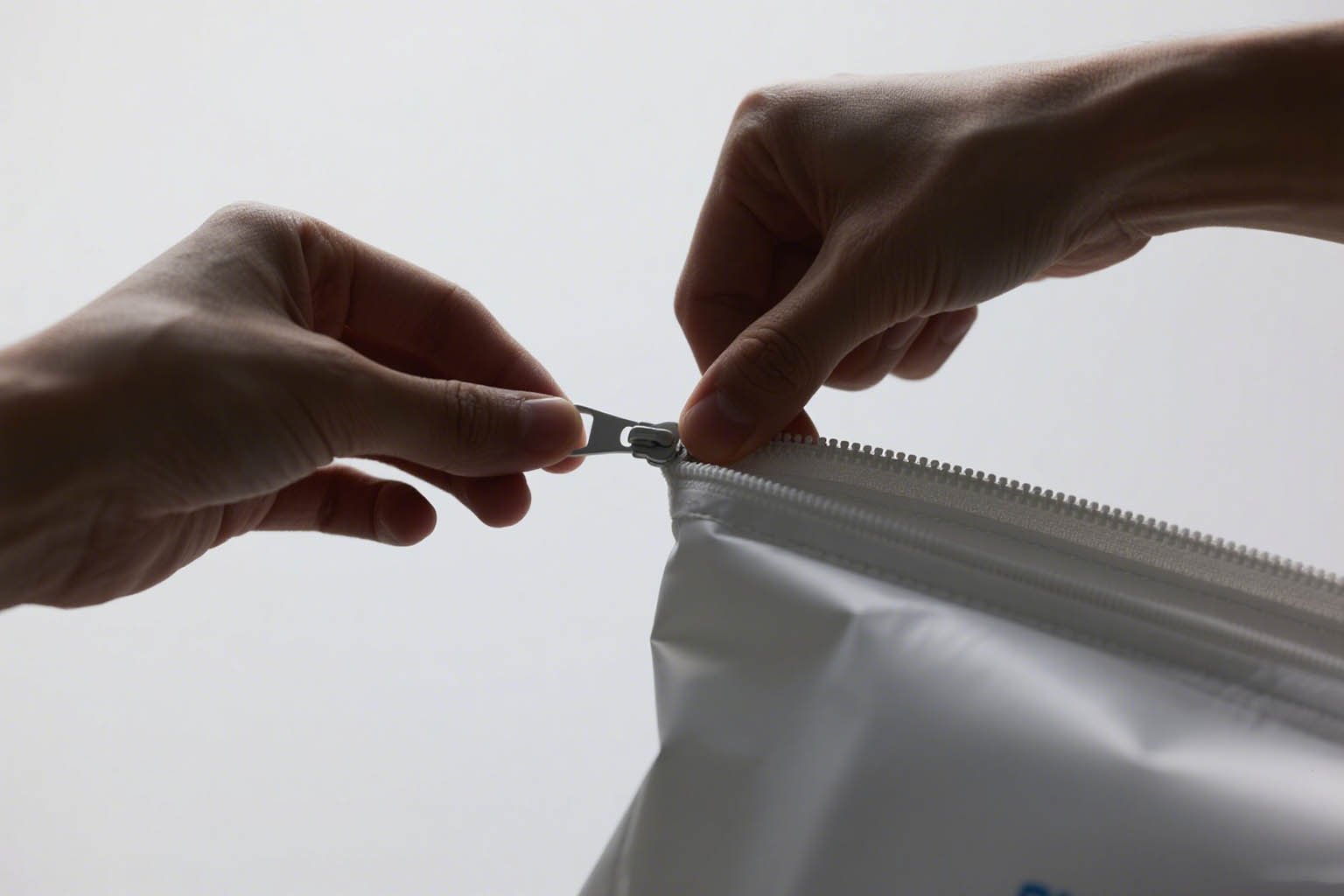Choosing sustainable packaging that actually works is tough. The wrong choice can end up hurting your brand and the planet. rPET cooler bags offer a practical and green alternative for your business.
rPET cooler bags are an excellent eco-friendly choice. Their main pros are sustainability, durability, and brandability. Their cons include a higher initial cost and less powerful insulation than hard coolers, making them best for short-term use.

As someone who works with sustainable materials every day, I get a lot of questions from business owners just like you. You want to make choices that are good for your brand and the earth, but it’s hard to know where to start. It’s important to understand the full picture of any material before you invest. Let’s break down the pros and cons of rPET cooler bags so you can see if they are the right fit for your brand.
What is an rPET cooler bag?
You see the term "rPET" on many eco-friendly products. But what does it actually mean? It can be hard to sell the value of a product to your customers if you aren’t completely sure yourself.
An rPET cooler bag is an insulated bag made from recycled polyethylene terephthalate (PET). This is the plastic used in drink bottles. The process turns waste into a strong, reusable fabric that is perfect for keeping items cool.

When I first started Avecobaggie, I was fascinated by the journey of rPET1. It’s a powerful story of turning trash into something useful. The process is quite simple. Used plastic bottles are collected, cleaned, and shredded into tiny flakes. These flakes are then melted and spun into high-quality polyester yarn. This yarn is what we use to create the durable fabric for our cooler bags. It’s a smart manufacturing process because it uses what we already have. This reduces our reliance on creating brand new plastic from oil, which is a big win for the environment.
From Bottle to Bag: rPET vs. Virgin Polyester
For businesses, this manufacturing story becomes a key selling point. You are not just selling a bag; you are selling a better choice. Here’s a simple comparison.
| Merkmal | rPET Fabric | Virgin Polyester Fabric |
|---|---|---|
| Source Material | Recycled Plastic Bottles | Petroleum (Fossil Fuels) |
| Energy Consumption | Significantly Lower | Hoch |
| Kohlenstoff-Fußabdruck | Verringert | Larger |
| Waste Impact | Reduziert Deponieabfälle | Creates New Plastic |
Why should you choose an rPET cooler bag over traditional cooler bags?
Traditional hard coolers are often bulky and made from new plastics. They don’t always reflect the modern, eco-conscious image that your brand wants to project. You need a better alternative that is practical and stylish.
You should choose an rPET cooler bag for its blend of sustainability, portability, and branding power. They are lighter than hard coolers, made from recycled materials, and offer a great surface for custom logos, making them ideal promotional items.

From my experience working with small businesses, the biggest advantage is versatility. A bulky hard cooler serves one basic purpose. An rPET cooler bag, however, can be a Lunchpaket, a picnic tote, or a grocery carrier. When you’re trying to stretch a marketing budget, that multi-functionality is a huge asset. I once worked with a startup that gave away branded rPET bags at a trade show. People loved them because they were genuinely useful. Soon, that brand’s logo was traveling to parks, offices, and beaches. This created far more brand awareness than a simple flyer ever could.
A Head-to-Head Comparison
To make the choice clearer, let’s see how rPET bags stack up against the old-school option.
| Merkmal | rPET Cooler Bag | Traditional Hard Cooler |
|---|---|---|
| Quelle des Materials | Recycled & Sustainable | Virgin Plastic, Foam |
| Tragbarkeit | Lightweight, Foldable | Heavy, Rigid, Bulky |
| Insulation | Good (Hours) | Excellent (Days) |
| Personalisierung | Excellent for Printing | Limited (Stickers) |
| Ökologische Auswirkungen | Positive (Reduces Waste) | Negative (Fossil Fuels) |
How long can an rPET cooler bag keep your food and drinks cold?
You need a cooler bag that actually works, not just one with a good eco-story. Doubts about insulation performance can stop you from making a smart investment. Let’s set some clear and realistic expectations for these bags.
A standard rPET cooler bag keeps items cool for about 3 to 5 hours. The final performance depends on the insulation quality, the outside temperature, and how full the bag is. It’s perfect for lunches, picnics, or short day trips.

When I talk to clients about sourcing cooler bags, performance is always a key topic. The cooling power2 of an rPET bag comes from its middle layer of insulation, which is usually PE foam. The bag’s effectiveness depends on a few simple factors. A bag that is packed full with pre-chilled items will stay cold much longer than a half-empty one. A bag sitting in a hot car will lose its cool faster than one kept in the shade. I always advise my clients to be honest about the bag’s capabilities in their marketing. It’s a fantastic bag for everyday life. By setting the right expectations, you ensure your customers are happy with a product that fits their needs perfectly.
Factors That Affect Cooling Performance
- Insulation Quality: Thicker foam insulation provides better temperature retention.
- External Conditions: A bag left in direct sunlight will perform differently than one used on a mild day.
- Contents: Using ice packs and chilling items before packing makes a huge difference.
- Packing Density: A full bag has less air inside, so it stays colder for longer.
What are the common disadvantages of rPET cooler bags?
Every single product has downsides, and it is smart to know what they are. Ignoring them can lead to unhappy customers and a wasted investment. So let’s look at the limitations of rPET bags that you should know about.
The main disadvantages are a higher initial cost compared to non-recycled bags and weaker insulation for extreme conditions. They can also show wear over time and may hold odors if not cleaned properly.

Being transparent about a product’s limits is the best way to build trust with customers. I always have this conversation with my clients. While rPET is a durable material, it’s not invincible. The fabric can show signs of wear like fading or pilling after heavy use or too many machine washes. The cost can also be a factor for businesses on a tight budget. However, I encourage them to think about the total value, not just the unit price. A slightly more expensive bag that tells a great story and lasts longer is a better investment. It is also important to give care instructions to your customers. A simple tip like "wipe clean with a damp cloth" can greatly extend the bag’s life.
A Realistic Look at the Drawbacks
Here’s how to think about the potential downsides for your business.
| Nachteil | Why It Matters for Your Business |
|---|---|
| Higher Initial Cost | Compared to bags made from virgin plastic, rPET cooler bags may come with a slightly higher unit price. This should be considered when calculating your product margins or planning for bulk promotional budgets. |
| Moderate Insulation | These bags are best suited for short-term use. They don’t offer the same level of temperature retention as high-end hard coolers, especially for multi-day trips or extreme outdoor conditions. |
| Visible Wear Over Time | With frequent use, the bag may show signs of aging such as fading or fabric pilling. While the structure remains durable, sharing tips for proper use and storage can help extend product life and customer satisfaction. |
| Odor Retention & Cleaning | Like many fabric-based bags, rPET can retain strong odors if not cleaned regularly. To enhance user experience, consider including a simple care guide with each order. |
Where can you buy high-quality rPET cooler bags and what should you look for?
Finding a reliable supplier is crucial for any product you sell. Sourcing low-quality bags can end up damaging your brand’s hard-earned reputation. I’ll share what I’ve learned to look for in a good product and a good partner.
Buy from established suppliers who can provide certification for their rPET material. Look for strong stitching, a durable waterproof liner, and high-quality zippers. Always request a physical sample before placing a large order.

I learned a hard lesson about sourcing early in my career. A client tried to save a few cents per bag with a new supplier I hadn’t vetted. When the shipment arrived, the bags looked great. But within a month, customers complained that the zippers were breaking and the liners were leaking. It was a disaster for their brand launch. We learned that true quality is about the small details. Now, I have a checklist that I run through with every potential manufacturer. Asking the right questions protects you, your investment, and your brand. A good supplier will always welcome these questions.
Your Quality Checklist for Sourcing rPET Bags
- Material Certification: Can the supplier provide GRS (Global Recycled Standard) certification? This guarantees the recycled content is real.
- Stitching and Handles: Are the seams reinforced? Are the handles stitched securely to the bag’s body to handle weight?
- Zipper Durability: Is the zipper sturdy? Does it operate smoothly? A cheap zipper is a common point of failure.
- Liner Integrity: Is the inner lining made of a food-safe, waterproof material like PEVA? Are its seams sealed to prevent leaks?
- Mustergenehmigung: Never place a bulk order without first getting and approving a physical sample yourself.
Schlussfolgerung
In short, rPET cooler bags are a fantastic, sustainable choice for many businesses. They align your brand values with modern customer needs and offer a practical product with a positive story.


